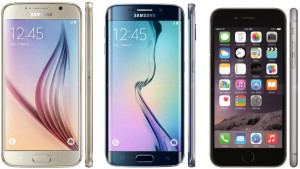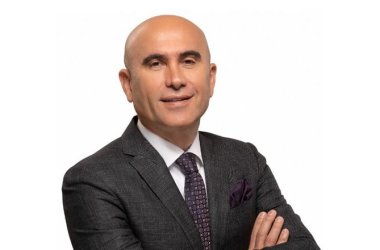 Smartphone shipments to the Middle East and Africa saw unprecedented year-on-year growth of 83 percent in Q4 2014, IDC.
Smartphone shipments to the Middle East and Africa saw unprecedented year-on-year growth of 83 percent in Q4 2014, IDC.
Spurred by the increased availability of cheaper models and dual-SIM devices, the advisory and consulting services firm announced that smartphones accounted for 41.9 percent of all mobile handset shipments to the region in 2014, up from 27 percent in 2013, with the overall handset market expanding 19.6 percent in volume year-on-year.
Feature phones have been hit hard by the increased availability of more affordable smartphones, with shipments down 4.5 percent year-on-year in 2014.
Smartphones priced under $100 captured 20 percent share of the MEA smartphone market in 2014, up from just 5 percent in 2013.
Additionally, market share of smartphones in the $100–200 price bracket increased eight percentage points in just one quarter, from 25 percent in Q3 2014 to 33 percent in Q4 2014.
Meanwhile, smartphones priced in the higher-end $250–500 bracket have seen their share of the overall market fall from 23 percent in Q3 2013 to 18 percent in Q4 2014.
“Many new vendors have been eager to get into the region’s burgeoning smartphone space, with a number of them launching phones in this growing price band,” said Nabila Popal, IDC’s research manager for handsets and display solutions in the Middle East and Africa. “This strategy of targeting the mid and low end of the market has contributed significantly to the success of vendors like Huawei and Lenovo.”
The GCC smartphone market expanded 31.8 percent in 2014, contributing to the region’s penetration rate reaching an impressive 72.6 percent.
The overall handset market’s vendor dynamics also changed by the end of 2014. Although Samsung maintained its number-one position in MEA, its smartphone share fell from 51.5 percent in 2013 to 43.8 percent for 2014.
Huawei and Apple followed in second and third places with shares of 8.9 percent and 7.8 percent respectively. The same trend can be seen quarter on quarter, with Samsung’s share dropping 7.8 points from Q3 to Q4 2014, while Huawei and Apple saw their shares increase 5.1 points and 2.7 points, respectively, over the same period.
“Apple’s growth is primarily due to the incredible success of its iPhone 6 and iPhone 6 Plus models, which finally placed the vendor in the large screen size segment that had previously been dominated by Samsung,” Popal said. “Many users that had made the switch from Apple to Samsung specifically for the larger screen sizes have now started to switch back. Meanwhile, Huawei has experienced a wave of growth in the mid to low-end segment, with its Honor 3 and Ascend Y series enjoying great success. The vendor has struck the right balance between quality and price, particularly in some of the region’s more emerging markets where it is even killing the local competition.”
Like in other global markets, the MEA market witnessed a massive 58 percent increase in the shipment of iOS devices in Q4 2014 compared to Q3 2014. Android shipments increased by only 3.8 percent over the same period, while Blackberry OS continued its declining trend after a temporary increase in Q3 2014.





